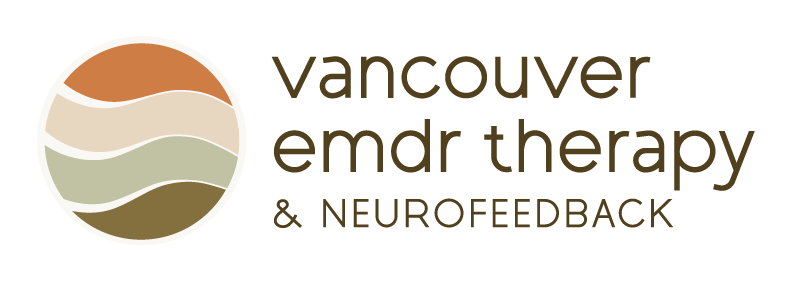You’re exhausted but can’t fall asleep. You feel so tired, but your body feels wired and “buzzing.” You drift in and out of sleep all night—worrying, thinking, ruminating, and feeling fearful, as if something bad is going to happen. You may even feel afraid to go to sleep because of frequent nightmares or night terrors. Do any of these scenarios feel familiar to you? If so, you are not alone.
DBR and EMDR for sleep problems are emerging as powerful tools to help people finally get the rest they need after trauma. For many, sleep disruptions are one of the most persistent and distressing symptoms of unresolved trauma—and they often don’t respond well to sleep hygiene tips or medications alone. That’s because trauma lives in the nervous system, not just the mind. Therapies like DBR and EMDR for sleep problems can gently target the body’s stuck survival responses and restore the natural rhythms needed for deep, restorative sleep.
Sleep Is a Major Health and Mental Health Issue
 Research shows that approximately 50–70% of people with PTSD or significant trauma histories experience sleep disturbances—including insomnia, nightmares, night terrors, and disrupted sleep patterns (Van Liempt, 2012; Germain, 2013).
Research shows that approximately 50–70% of people with PTSD or significant trauma histories experience sleep disturbances—including insomnia, nightmares, night terrors, and disrupted sleep patterns (Van Liempt, 2012; Germain, 2013).
- In the general population, around 30–40% experience insomnia at some point. However, many of these cases may be linked to unrecognized or unresolved trauma, especially when insomnia becomes chronic (Maher et al., 2006).
- Among veterans and first responders—who have high trauma exposure—more than 80% report trauma-related sleep problems (Pigeon et al., 2013).
- For childhood trauma survivors, strong evidence links early attachment trauma to long-term dysregulation of the nervous system and disrupted sleep cycles (El-Sheikh & Buckhalt, 2005).
Trauma-focused therapies such as EMDR, Deep Brain Reorienting (DBR), and somatic or neurofeedback-based interventions are often essential to truly restore rest (Germain, 2013). When your sleep begins to return, it’s not just about rest—it’s a sign that your nervous system is starting to feel safe again. Sleep then becomes a powerful partner in trauma healing.
How Trauma Disrupts Sleep
 There are several ways trauma affects sleep. When trauma is unresolved, the nervous system often remains in a state of chronic hyperarousal. The body cycles through survival states like fight, flight, or freeze, even when there’s no external danger. This dysregulation directly interferes with sleep cycles, leading to nightmares, early morning wakings, fear of falling asleep, and fragmented rest (Van Liempt, 2012).
There are several ways trauma affects sleep. When trauma is unresolved, the nervous system often remains in a state of chronic hyperarousal. The body cycles through survival states like fight, flight, or freeze, even when there’s no external danger. This dysregulation directly interferes with sleep cycles, leading to nightmares, early morning wakings, fear of falling asleep, and fragmented rest (Van Liempt, 2012).
Restorative sleep is not a luxury—it’s a vital part of trauma healing. That’s why an integrative approach is so important.
EMDR Therapy for Restoring Sleep
Eye Movement Desensitization and Reprocessing (EMDR) is a memory-processing psychotherapy that helps resolve disturbing life experiences. EMDR is highly effective at processing trauma—whether from childhood or adulthood—that may be stored in the nervous system and interfering with sleep.
One of the mechanisms for how EMDR is thought to work is that it mimics REM (Rapid Eye Movement) sleep. REM sleep is a natural healing process that allows the brain to reprocess the days distressing events. Like Rapid Eye Movement in sleep EMDR reduces the emotional charge of traumatic memories allowing for more positive thoughts and feelings to emerge.
EMDR can also help resolve the trauma of not being able to sleep—reducing nighttime hypervigilance and increasing a felt sense of safety at bedtime (Maher et al., 2006).
Deep Brain Reorienting (DBR): Addressing Trauma at the Core
DBR is a newer and highly specialized therapy that targets trauma stored deep in the brainstem, particularly the orienting response—our most primitive reaction to perceived threat. DBR accesses and processes shock and pre-verbal trauma that many other therapies can’t reach. This is especially helpful for clients with early attachment trauma, persistent hypervigilance, or distressing awakenings from nightmares.
Deep Brain Reorienting therapy targets pre-conscious brainstem responses—such as the orienting tension and shock trauma in the form of non verbal body based tension. With DBR clients reprocess trauma at the level it was encoded—often far beneath cognitive awareness. By working at the level of implicit, autonomic fear, DBR calms the brainstem’s alarm system and restores internal safety—an essential foundation for sleep (Reitav & Thirlwell, 2025).
LENS Neurofeedback: Creating Brain-Body Safety for Rest
Low Energy Neurofeedback System (LENS) is a non-invasive, FDA-registered neurotechnology that  gently supports the brain in shifting out of stuck, survival-based patterns. It requires no active effort, talk therapy, or memory recall—making it an excellent option for clients who feel overwhelmed or “stuck” in their healing process.
gently supports the brain in shifting out of stuck, survival-based patterns. It requires no active effort, talk therapy, or memory recall—making it an excellent option for clients who feel overwhelmed or “stuck” in their healing process.
LENS has been shown to help:
- Improve sleep onset
- Reduce night wakings and nightmares
- Promote a calm, regulated nervous system
By supporting neuroregulation, LENS creates the internal conditions needed for the brain and body to finally rest (Reitav & Thirlwell, 2025).
Putting Trauma to Sleep: The TABS Framework
At Vancouver EMDR Therapy and Neurofeedback, we utilize a trauma and sleep model called TABS, which stands for Trauma, Attachment, Body sensations, and Sleep. This model is inspired by the work of Reitav and Thirlwell (2025) in their book, Putting Trauma to Sleep, and shaped by our clinical experience treating complex trauma.
TABS reminds us that sleep isn’t something you can force—it’s something your body relearns to trust. Sleep is the outcome of trauma healing. When the nervous system no longer feels on guard, sleep begins to return naturally, deeply, and consistently.
You Can Heal—and You Can Sleep Again
Whether through EMDR, DBR, neurofeedback, or body-based therapies, healing is possible. Each therapy plays a distinct role—and when used together, they create a synergistic path toward safety, rest, and restoration. Trauma therapy supports better sleep, and better sleep supports deeper healing.
If sleep continues to be elusive, know that it’s not your fault and you’re not broken. Your body is doing what it had to do to survive. But with the right support, it can remember how to rest again.
Call today to begin your healing journey toward trauma recovery and restorative sleep!




